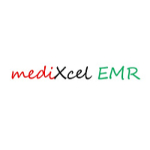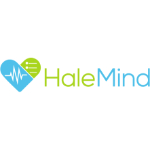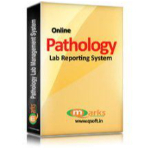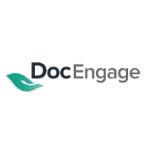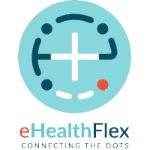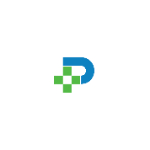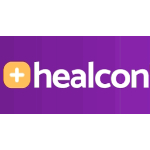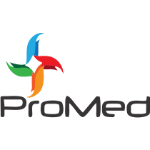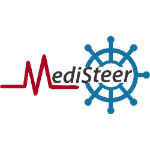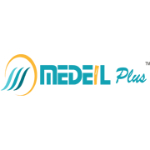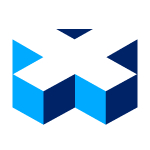TechnologyCounter provides genuine, unbiased real user reviews to help buyers make informed decisions. We may earn a referral fee when you purchase through our links, at no extra cost to you.
List of 15 Best Patient Management Software
Showing 1 - 15 of 74 productsMediXcel EMR is a electronic medical records software designed to streamline and optimize the healthcare process. With its user-friendly interface features, it helps healthcare professionals to efficiently manage patient records, improve communicatio...Read MediXcel EMR Reviews
Halemind, the innovative software designed to enhance your mind and optimize your performance. With its advanced features and user-friendly interface, Halemind is a tool for boosting your cognitive abilities and achieving your goals. Say hello to a s...Read Halemind Reviews
Qmarksoft Pathology offers exceptional features that cater to all your lab needs. With complete customization options, user-friendly interface, and cost-effective pricing, Qmarksoft Pathology allows you to efficiently manage and monitor your lab oper...Read Qmarksoft Pathology Reviews
eHospital is a digital solution for all your healthcare needs. Designed to simplify and streamline the medical process, eHospital provides an all-in-one platform for patients and medical professionals to connect and manage their healthcare services...Read eHospital Reviews
DocEngage EHR is a top-rated electronic health record (EHR) software co-created with input from over 1000 medical professionals. It addresses the unique challenges faced by doctors and clinic staff, making their work easier and more efficient. It is...Read DocEngage EHR Reviews
eHealthFlex is a software designed to revolutionize the field of healthcare. With its advanced technology and user-friendly interface, eHealthFlex brings a new level of efficiency and convenience to medical professionals and patients alike. Say goodb...Read eHealthFlex Reviews
Pappyjoe CMS is a medical management software designed to streamline processes and optimize practice efficiency. With advanced features and user-friendly interface, Pappyjoe CMS empowers healthcare providers to manage patient information, appointment...Read Pappyjoe CMS Reviews
Aarogya HMIS is a powerful and comprehensive hospital management software that ensures the secure management of information. It offers effective and reliable solutions for general hospital management, including organizing financial accounts and patie...Read Aarogya HMIS Reviews
Healcon Practice, the all-in-one solution for managing your medical practice. Streamline your day-to-day tasks and enhance patient care with its user-friendly interface features. With Healcon Practice, you can efficiently schedule appointments, organ...Read Healcon Practice Reviews
Yasasii, the ultimate software solution for all your organizational needs. With its user-friendly interface features, Yasasii streamlines and simplifies your daily tasks, boosting productivity and efficiency. Say goodbye to complicated systems and he...Read Yasasii Reviews
ProMed is a software solution for healthcare professionals. With its user-friendly interface technology, ProMed streamlines everyday tasks and improves efficiency. Say goodbye to traditional methods and hello to a new era of digital excellence with P...Read ProMed Reviews
MediSteer is a leading software solution designed for the healthcare industry. Developed with a deep understanding of the complex and dynamic needs of healthcare organizations, MediSteer streamlines processes, improves efficiency, and enhances patien...Read MediSteer Reviews
Medeil Plus is an innovative and user-friendly pharmacy management software that streamlines the daily operations of your pharmacy. It offers a simple yet efficient solution for managing inventory, sales, purchases, and other crucial aspects of your...Read Medeil Plus Reviews
Luma Health is a leading healthcare technology company that is revolutionizing the patient experience. Our innovative software is designed to improve communication, efficiency, and access to care for both patients and healthcare providers. With Luma...Read Luma Health Reviews
Practice Fusion is a user-friendly and innovative electronic health record (EHR) software that is designed to streamline the healthcare experience for both patients and practitioners. With its seamless interface and top-notch features, Practice Fusio...Read Practice Fusion Reviews
- What Is Patient Management Software?
- Top Reasons Why Businesses Need Patient Management Software?
- What Are the Top Key Features of Patient Management Software?
- What Are the Top Benefits of Patient Management Software?
- What Are the Steps to Choose the Right Patient Management Software?
- What Are the Types of Patient Management Software for Different Industries?
- What Are the Technology Trends for Best Patient Management Software?
- What Are the Deployment Options for Patient Management Software?
What Is Patient Management Software?
Patient management software refers to computer software that is utilized in the management of medical practices to streamline and enhance the daily operations of such practices.
The utilization of this technology encompasses several functionalities such as appointment scheduling, patient information recording, patient health history tracking, financial record maintenance, and facilitating communication between patients and medical practitioners.
The utilization of the best patient management system software facilitates the optimization of patient and practice management procedures, mitigates the occurrence of errors and delays, and enhances the quality of customer service. This particular program has the capability to provide comprehensive reports pertaining to patient information, including diagnosis, treatments, medicines, and other relevant data.
Additionally, it facilitates patient contact through the provision of patient portals. Additionally, it has the capability to monitor the performance of physicians and personnel, facilitate communication with patients through messaging, and produce invoices for instances of treatment.
In summary, the best patient management software facilitates the efficient management of medical practices and enhances the quality of patient care provided by healthcare professionals. The utilization of this technology holds significant potential in facilitating cost reduction, enhancing the quality of service, improving patient happiness, and optimizing practice efficiency within the medical field.
Top Reasons Why Businesses Need Patient Management Software?
1. The system facilitates convenient retrieval and modification of patient demographic data, hence enhancing the efficacy of administrative operations.
2. The utilization of appointment scheduling and reminder systems aids in the optimization of healthcare operations, resulting in decreased patient wait times.
3. The best patient management software offers a detailed examination of patient visits and medical history, thereby mitigating the occurrence of errors resulting from incomplete or inaccessible records.
4. The implementation of the best patient management system technology enhances the exchange of information between healthcare professionals and patients, hence enabling the provision of individualized and streamlined healthcare services.
5. Digitization of medical records and their consolidation into a single accessible platform serves to mitigate the financial burden associated with administrative tasks such as paperwork and filing, hence reducing overhead costs.
6. The utilization of this technology facilitates precise billing and coding processes by enabling the rapid and effective generation of insurance claims.
7. The implementation of online booking systems facilitates the process of scheduling appointments, hence alleviating the burden on healthcare professionals and minimizing resource utilization.
8. The patient management tool retains comprehensive patient data, facilitating enhanced precision in diagnosis and medicine prescription.
9. The web-based patient management system automates the process of communicating with third-party payers to enhance the efficiency of the reimbursement process.
10. The software offers extensive reporting functionalities that enable efficient and precise evaluation of a practice's performance.
11. The best patient management system facilitates the retrieval of patient information to effectively manage waiting lists and waiting times.
12. The implementation of a patient management tool that has comprehensive authorization and authentication procedures enhances data security.
13. The integration of new technology is facilitated to enhance the accuracy and efficiency of patient information management systems.
14. The best patient management software technology facilitates uninterrupted integration across various healthcare entities and staff members to enhance the effectiveness of service provision.
15. One of the benefits of implementing rigorous access controls is the enhancement of compliance with privacy requirements, as it effectively regulates and limits the individuals who are authorized to access sensitive information.
What Are the Top Key Features of Patient Management Software?
The top key features of patient management software include:
1. Appointment scheduling: The implementation of an automated and efficient appointment scheduling system is recommended, wherein a centralized calendar is made readily accessible. This calendar would allow clinicians and staff members to conveniently access real-time availability information.
2. Electronic medical records (EMR): Maintain comprehensive patient medical records inside a secure and digitally accessible platform including a user-friendly interface.
3. Secure patient communication: Utilize encrypted technology to facilitate secure online communication with patients and healthcare professionals.
4. Billing and payments: One potential solution to streamline administrative tasks and enhance efficiency in healthcare practices is the integration of payment processing functionality with patient management software. This integration aims to mitigate the burden of paperwork and facilitate the management of patient billing processes.
5. Real-time analytics and reporting: The proposed solution entails the consolidation of patient-related data, including cost metrics, volume statistics, patient turnover rates, and medical claims, into a user-friendly dashboard for efficient monitoring and management.
6. Document management: The implementation of automated systems for managing documents, including patient records and claims forms, will facilitate the efficient management of precise and current medical information.
7. Automation: One potential approach to enhancing operational efficiency and patient satisfaction is through the automation of various operations, like as prescription refill requests, appointment confirmations, and follow-up calls. By implementing automated systems for these activities, healthcare facilities can optimize their personnel resources and perhaps enhance the overall patient experience.
8. Analytics: The utilization of the best patient management software empowers healthcare professionals to acquire valuable insights into operational trends and performance, hence facilitating the ability to make decisions that are both accurate and well-informed.
9. Security: The security of patient data is of utmost significance, and the utilization of a web-based patient management system guarantees the secure storage and management of all patient data.
10. Patient portal: Enable patients to conveniently access and effectively oversee their medical records and assume responsibility for their healthcare through a secure and digitally-mediated patient portal.
What Are the Top Benefits of Patient Management Software?
1. Improved efficiency and accuracy: The implementation of patient management software has the potential to significantly decrease the duration dedicated to manual input of patient health data, hence mitigating medical errors arising from manual data entry.
2. Improved patient care: An online patient management system has the potential to facilitate prompt and precise diagnosis and treatment of patients by granting medical personnel immediate access to real-time patient data.
3. Greater visibility into costs and outcomes: Patient management tool plays a crucial role in facilitating the identification of areas requiring attention and the monitoring of outcomes by furnishing comprehensive information and analytics about patient care. This tool aids clinicians and administrators in their pursuit of improved healthcare delivery.
4. Improved security: The utilization of the best patient management software can effectively safeguard patient data through the implementation of comprehensive security mechanisms, including encryption, authentication, and access control.
5. Automation of administrative tasks: The utilization of the best patient management system software has the potential to optimize the efficiency of several administrative responsibilities, including the organization of appointments, the facilitation of insurance claims, and the management of documentation.
6. Improved access to patient data: An online patient management system has the potential to enhance the coordination of treatment among medical personnel by facilitating access to patient records from any location.
7. Reduced paperwork: The patient management tool has the potential to streamline the collection and maintenance of patient records, resulting in a notable decrease in the time and resources required for paperwork processing.
8. Improved patient communications: The online patient management system software offers a range of features, including encrypted messaging, email functionality, and telemedicine services, which aim to enhance patient communication and foster greater patient participation.
What Are the Steps to Choose the Right Patient Management Software?
1. Identify your organization’s patient management needs: The initial stage in selecting an appropriate online patient management system entails evaluating the patient management requirements of one's organization. It is essential to do a comprehensive assessment of patient monitoring, scheduling, billing, and other clinical operations to discern the precise features and capabilities that are needed from a system.
2. Research potential systems: Having compiled a comprehensive list of requisite system characteristics, the next step entails searching for patient management tool solutions capable of fulfilling these requirements. Examine multiple systems to have a more comprehensive understanding of the available possibilities and determine the most suitable ones for your firm.
3. Ask for demonstrations and/or free trials: After the process of narrowing down the list of suitable software solutions, it is advisable to initiate contact with the respective service providers to request demonstrations and/or free trials. Observing a functioning system is the most effective means of evaluating its user-friendliness and determining its suitability for meeting the requirements of an organization.
4. Compare the features of multiple systems: Having examined various solutions, it is now important to engage in a comparative analysis of these solutions, taking into consideration their respective features, pricing structures, user evaluations, and other relevant criteria. It is advisable to have a receptive mindset and thoroughly evaluate the advantages and disadvantages of each system to make an informed decision regarding the most suitable choice for your firm.
5. Create an implementation plan: After selecting the patient management system that is most suitable for the organization, the next step involves formulating an implementation plan. It is imperative to ensure that all essential personnel receive appropriate training and that the implementation of the new system is executed with minimal disruptions.
6. Ongoing maintenance and checks: Following the initial phase of adaptation, it is imperative to consistently update the patient management software, assess the operation of the system, and make required adjustments to ensure the optimal management of patient data.
What Are the Types of Patient Management Software for Different Industries?
Patient management software (PMS) is a specialist software application that has been specifically developed to optimize and enhance the efficiency of medical, nursing, and administrative processes.
Premenstrual syndrome (PMS) finds application across several sectors, encompassing hospitals, medical clinics, and diagnostic laboratories.
1. Hospital management software: This particular form of PMS is specifically developed to oversee and regulate the routine activities and functions within a hospital setting. The system encompasses several functionalities, including the organization of patient schedules, monitoring of appointments, maintenance of medical records, billing processes, and data analysis.
2. Ambulatory care management software: This particular form of PMS is specifically developed to oversee the provision of healthcare services to patients at their residences or other outpatient care environments. The system encompasses several functionalities, including point-of-care documentation, patient scheduling, and reporting.
3. Long-term care management software: This particular form of PMS is specifically developed to oversee and coordinate the healthcare services provided to individuals residing in long-term care institutions. The system encompasses several functionalities, including patient evaluations, record-keeping, and financial administration.
4. Lab management software: This particular form of PMS is specifically engineered to effectively oversee and regulate the operational processes within a laboratory setting. The system encompasses several functionalities, such as the monitoring of specimens, the organization of paperwork, and the management of test results.
5. Electronic health record (EHR) software: This particular version of PMS has been specifically developed to effectively handle and organize all the pertinent data about a patient's overall well-being. The system encompasses several functionalities, including charting, order management, prescription handling, and imaging capabilities.
6. Nurse management software: This particular form of PMS has been specifically developed to effectively oversee and regulate the operational processes undertaken by nurses. The system encompasses several functionalities, including but not limited to patient scheduling, care plans, drug administration records, and bedside nursing reports.
What Are the Technology Trends for Best Patient Management Software?
The technology trends for best patient management software are:
1. Digital Health Platforms: Digital health platforms refer to software systems that are specifically designed for healthcare purposes. These platforms enable healthcare practitioners to safely and quickly document and exchange patient medical records.
2. Artificial Intelligence (AI): The utilization of artificial intelligence (AI) in patient management software enables the analysis of data, identification of patterns, and provision of valuable insights about intricate patient information. This aids in the precise diagnosis and potential treatment of medical disorders.
3. Wearables and Sensors: Wearables and sensors refer to devices that are worn on the human body and can measure various physiological parameters, including but not limited to heart rate, body temperature, and blood pressure. The data obtained from these devices has the potential to be utilized to monitor an individual's health status.
4. Mobile Solutions: The utilization of mobile technologies in the healthcare sector, including telehealth, telemedicine, and remote patient monitoring (RPM), is experiencing a notable surge in popularity. This enables medical practitioners to remotely access patient information and oversee the state of their health regardless of their location.
5. Cloud Computing: Cloud computing is being employed for data storage and retrieval, hosting programs via the Internet, and facilitating healthcare practitioners' access to patient data from many origins.
6. Big Data and Analytics: The utilization of big data and analytics has the potential to assist healthcare firms in identifying patterns within patient data and gaining a deeper comprehension of their customers' requirements. Subsequently, this data can be utilized to enhance the results experienced by patients.
What Are the Deployment Options for Patient Management Software?
The deployment choices for patient management software can exhibit significant variations contingent upon the specific requirements of the healthcare institution.
There are typically three primary deployment options that can be employed:
1) On-Premise Deployment: The implementation of patient management software through on-premise deployment necessitates the procurement, installation, and administration of the complete system on the organization's own physical or virtual servers.
This particular choice provides the business with a greater degree of control over the system. However, it necessitates substantial initial and continuous investments.
2) Cloud-Based Deployment: The implementation of a cloud-based deployment of patient management software necessitates the procurement of a subscription by the organization to access and utilize the software. Web based patient management system approach effectively decreases the initial and continuous expenses associated with system installation and maintenance, while also offering the advantage of convenient software upgrades.
However, Cloud based patient management system is important to note that opting for this method entails relinquishing a certain level of control over the system to the cloud provider.
3) Hybrid Deployment: This alternative is characterized by its amalgamation of the aforementioned options, providing organizations with enhanced adaptability and authority while simultaneously harnessing the capabilities and attributes of cloud-based tools and features.
The selection of the deployment method should ultimately be contingent upon the unique requirements and IT infrastructure of the company, in addition to the functionalities and capabilities provided by the patient management software.
